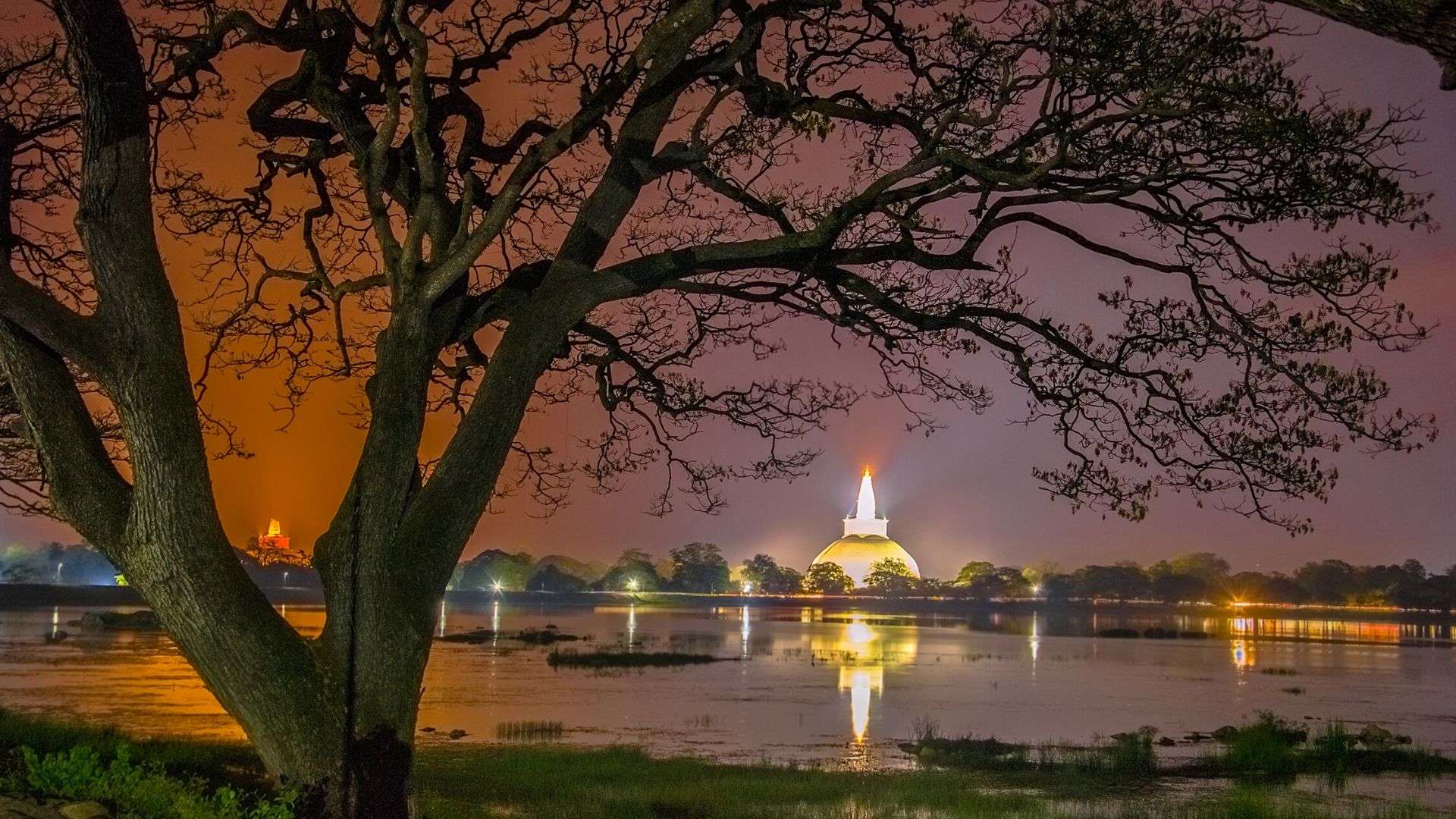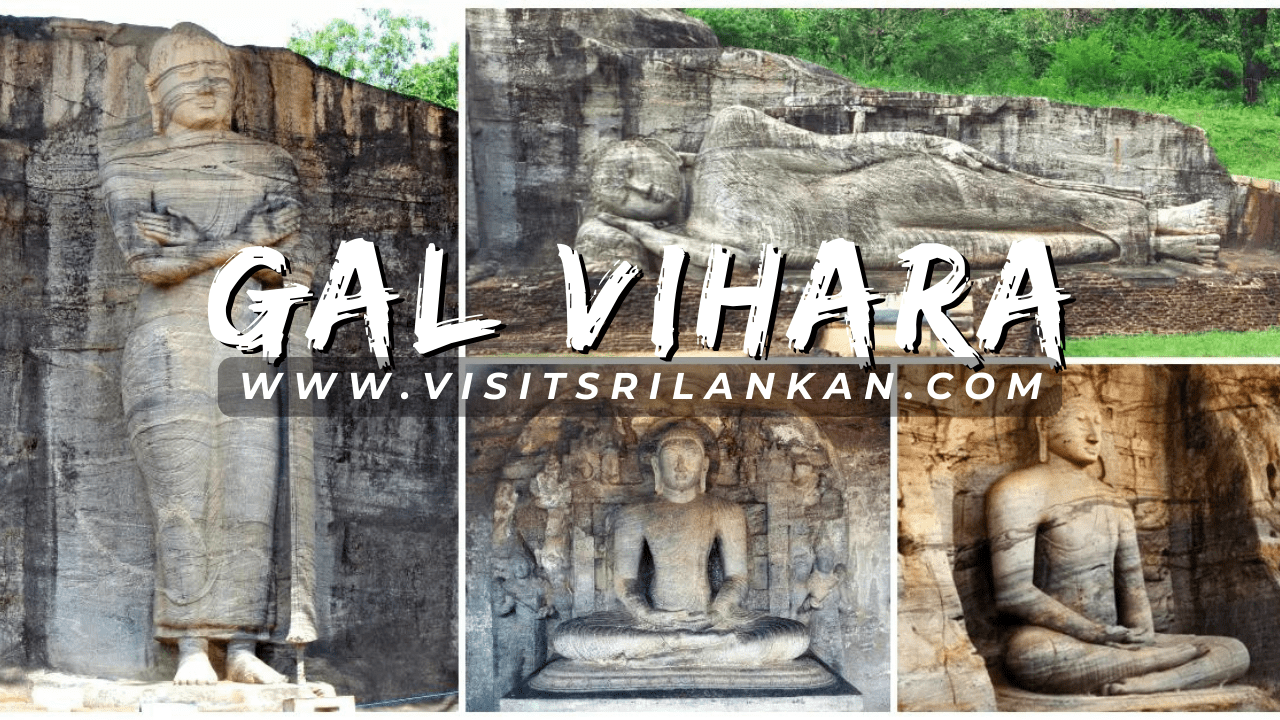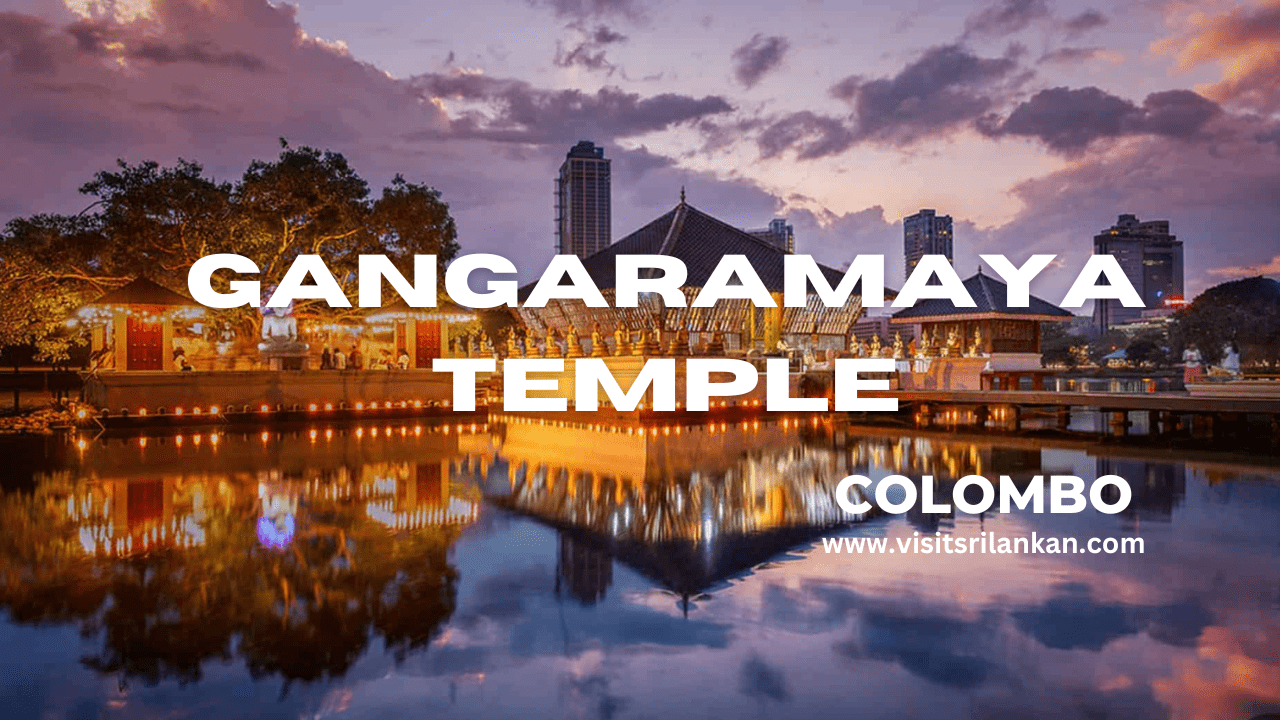Introduction to Anuradhapura
Anuradhapura, a city steeped in history and culture, serves as a testament to the enduring legacy of ancient Sri Lankan civilization. This sacred city, now a UNESCO World Heritage Site, was the capital of Sri Lanka for over a millennium, from the 4th century BCE to the 11th century CE. Located in the North Central Province, Anuradhapura is renowned for its well-preserved ruins of an ancient Sinhala civilization, offering an unparalleled glimpse into the past.
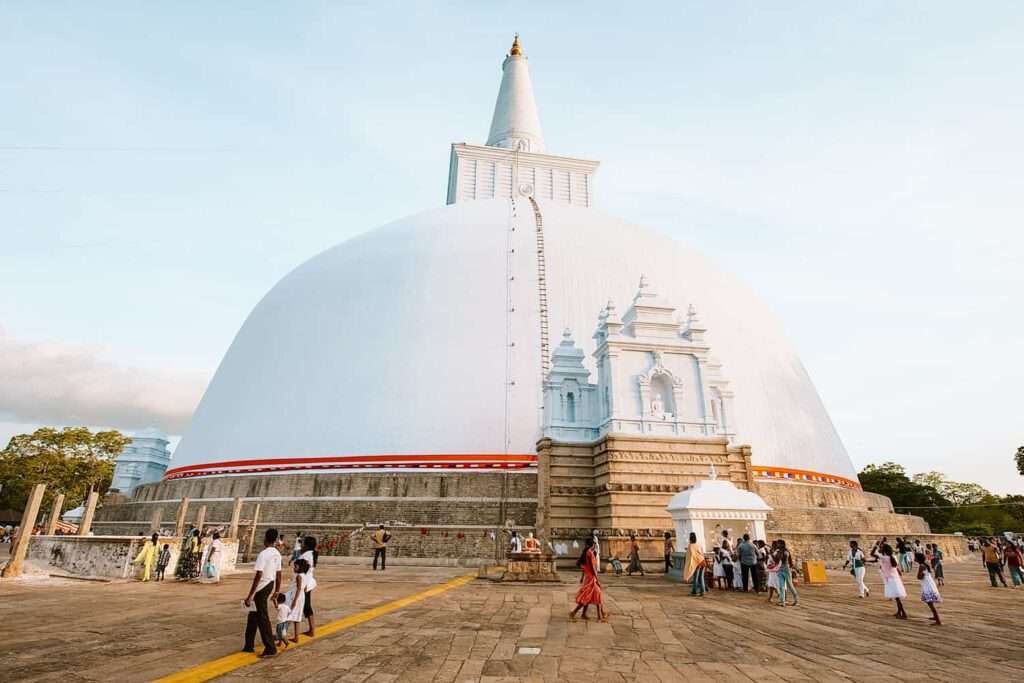
Historical Significance
The Founding of Anuradhapura
Anuradhapura’s origins trace back to the 5th century BCE when it was established by King Pandukabhaya. It became the first established kingdom in ancient Sri Lanka, marking the beginning of a sophisticated and organized civilization. The city’s layout, including the construction of reservoirs and intricate irrigation systems, demonstrates the advanced engineering skills of its ancient inhabitants.
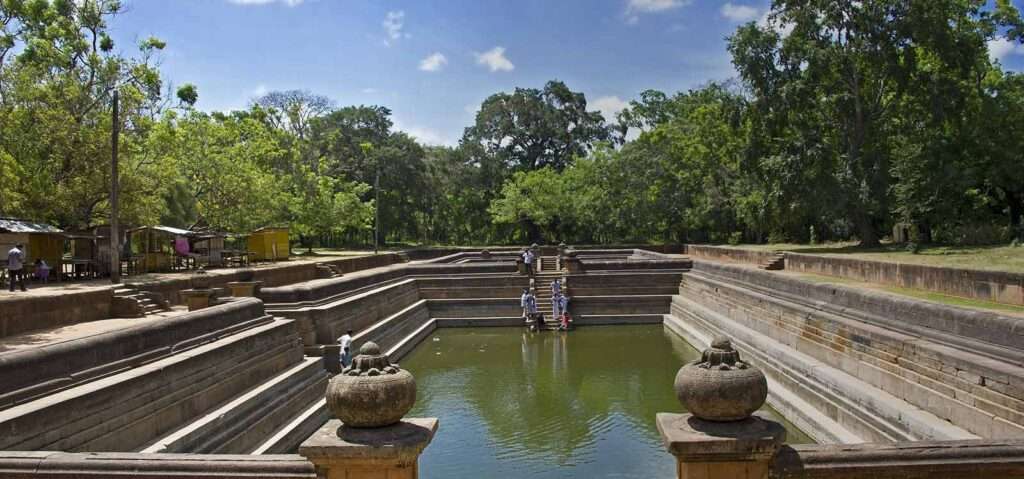
Buddhism and Anuradhapura
The introduction of Buddhism in the 3rd century BCE by King Devanampiya Tissa, following the missionary work of Mahinda Thera, profoundly influenced Anuradhapura. The city became a major center of Theravada Buddhism, and its landscape is dotted with numerous stupas, monasteries, and temples. The sacred Bodhi Tree, grown from a sapling of the original Bodhi Tree under which Buddha attained enlightenment, remains a pivotal pilgrimage site.

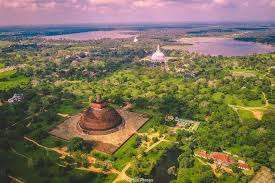

Architectural Marvels
Ruwanwelisaya Stupa
The Ruwanwelisaya Stupa, built by King Dutugemunu in 140 BCE, is one of Anuradhapura’s most iconic structures. This magnificent stupa stands 103 meters tall and has a diameter of 290 meters. Its white dome is a symbol of purity and is revered by Buddhists worldwide. The stupa is surrounded by a stone-paved terrace and a ring of smaller stupas, enhancing its grandeur.
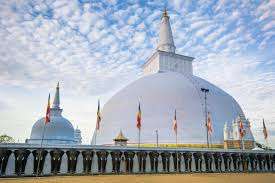


Abhayagiri Monastery Complex
The Abhayagiri Monastery, established in the 2nd century BCE, was one of the largest monasteries in Anuradhapura, accommodating up to 5,000 monks. The centerpiece of this complex is the Abhayagiri Dagoba, standing at 75 meters. The monastery was a hub of Buddhist learning and artistic endeavors, with remnants of intricate carvings and sculptures showcasing the skill of ancient craftsmen.

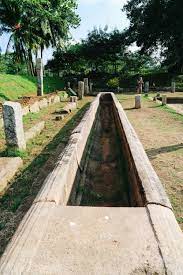
Jetavanaramaya Stupa
Jetavanaramaya, constructed by King Mahasena in the 3rd century CE, is one of the tallest stupas in the world, originally reaching a height of 122 meters. Though partially ruined, it still stands as a colossal brick structure. Jetavanaramaya reflects the zenith of Sinhalese stupa construction and was an important religious site for centuries.
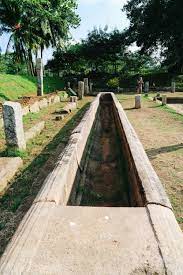

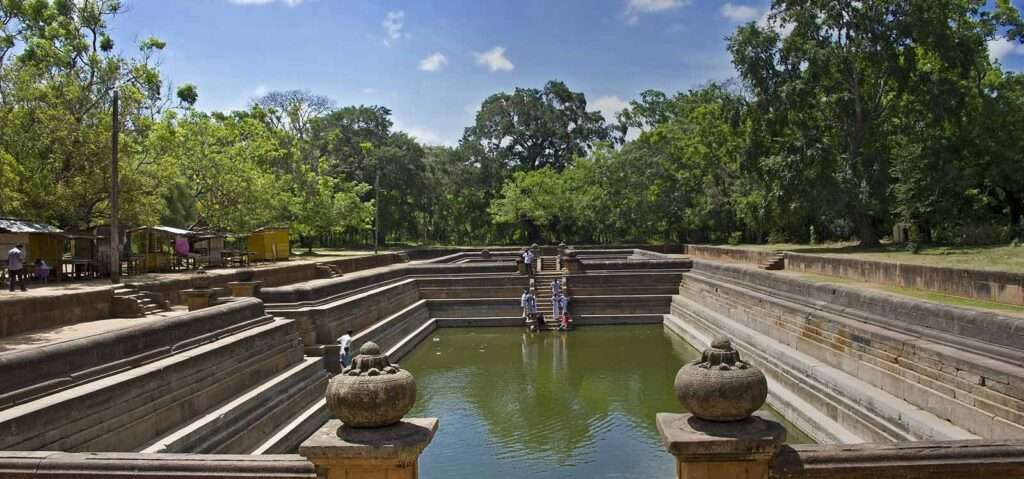
The Sacred Bodhi Tree
The Jaya Sri Maha Bodhi is the oldest living human-planted tree in the world with a known planting date, planted in 288 BCE. This sacred fig tree, a sapling from the original Bodhi Tree in India, is deeply venerated by Buddhists. The tree symbolizes the rich spiritual heritage of Anuradhapura and attracts pilgrims from around the globe.
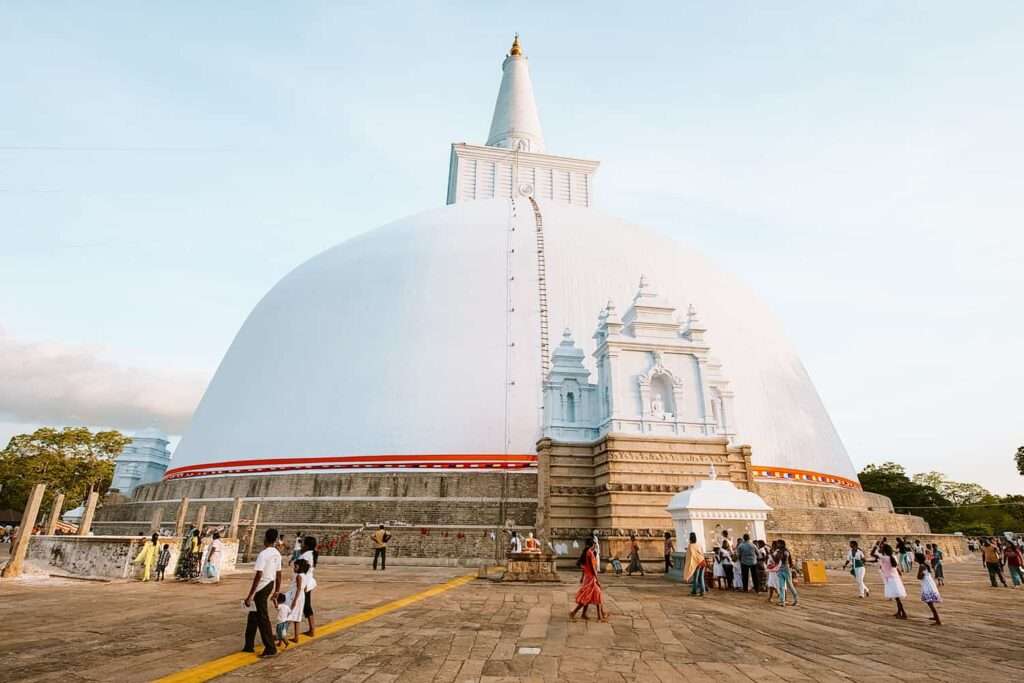
Ancient Reservoirs and Irrigation Systems
Tissa Wewa
Tissa Wewa, an ancient reservoir built by King Devanampiya Tissa, remains a crucial water source for Anuradhapura. This artificial lake, covering an area of approximately 550 acres, exemplifies the ingenuity of ancient Sri Lankan hydrological engineering. The reservoir supported agriculture and sustained the city’s population for centuries.


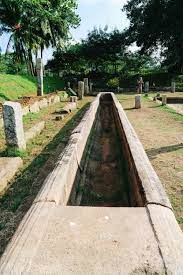
Kala Wewa
Kala Wewa, constructed by King Dathusena in the 5th century CE, is another marvel of ancient engineering. This massive reservoir, with a capacity of over 123 million cubic meters, played a vital role in the irrigation network of the region. The reservoir is connected to the Jayaganga (Yoda Ela), a 54-mile-long canal that facilitated efficient water distribution.
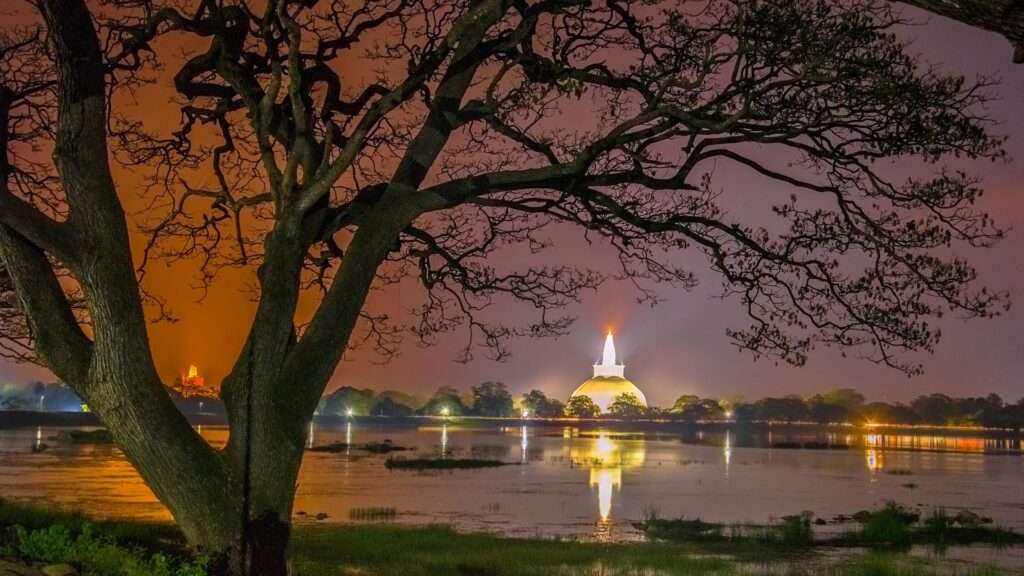
Cultural and Religious Practices
Poson Festival
The Poson Festival, celebrated in June, commemorates the introduction of Buddhism to Sri Lanka. Anuradhapura becomes a focal point of festivities, with thousands of pilgrims gathering to pay homage at the sacred sites. The city is adorned with lanterns and decorations, and various religious activities, including processions and chanting, take place.
Poya Days
Poya Days, marking the full moon, are significant in the Buddhist calendar. Anuradhapura, with its numerous temples and stupas, becomes a center of worship and reflection. Devotees participate in rituals, offering alms, and engaging in meditation. These observances underscore the city’s enduring spiritual legacy.
Archaeological Discoveries
The Moonstone
Anuradhapura is renowned for its intricately carved moonstones (Sandakada Pahana). These semi-circular stone slabs are found at the entrances of monasteries and depict a detailed representation of animals, plants, and divine figures. The moonstones are considered masterpieces of ancient Sinhalese art, reflecting religious and cultural symbolism.
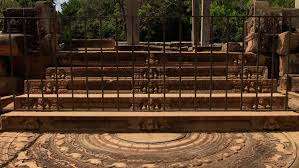
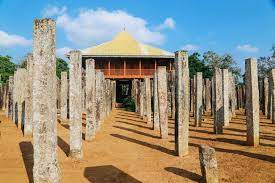

The Aukana Buddha Statue
The Aukana Buddha statue, located near Anuradhapura, is a remarkable example of ancient stone carving. This 12-meter tall statue, dating back to the 5th century CE, stands majestically, embodying serenity and grace. It is a testament to the artistic excellence achieved during the Anuradhapura period.
Preservation and Tourism
UNESCO World Heritage Site
Anuradhapura was designated a UNESCO World Heritage Site in 1982, recognizing its outstanding cultural value. Efforts to preserve its monuments and relics are ongoing, ensuring that future generations can appreciate its historical significance. Conservation projects focus on maintaining the structural integrity and aesthetic appeal of the ancient ruins.


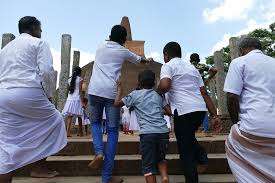
Visitor Experience
Tourism plays a pivotal role in Anuradhapura’s economy. The city offers a rich experience for visitors, with guided tours available to explore its archaeological and religious sites. The Anuradhapura Museum provides in-depth insights into the city’s history and culture. Sustainable tourism practices are promoted to protect and enhance the heritage site.
Conclusion
Anuradhapura stands as a beacon of Sri Lanka’s ancient glory, a city where history, culture, and spirituality converge. Its architectural marvels, sacred relics, and innovative engineering continue to inspire awe and reverence. Visiting Anuradhapura is not just a journey through time but an immersion into the heart of a civilization that has profoundly shaped the cultural and religious landscape of Sri Lanka.

